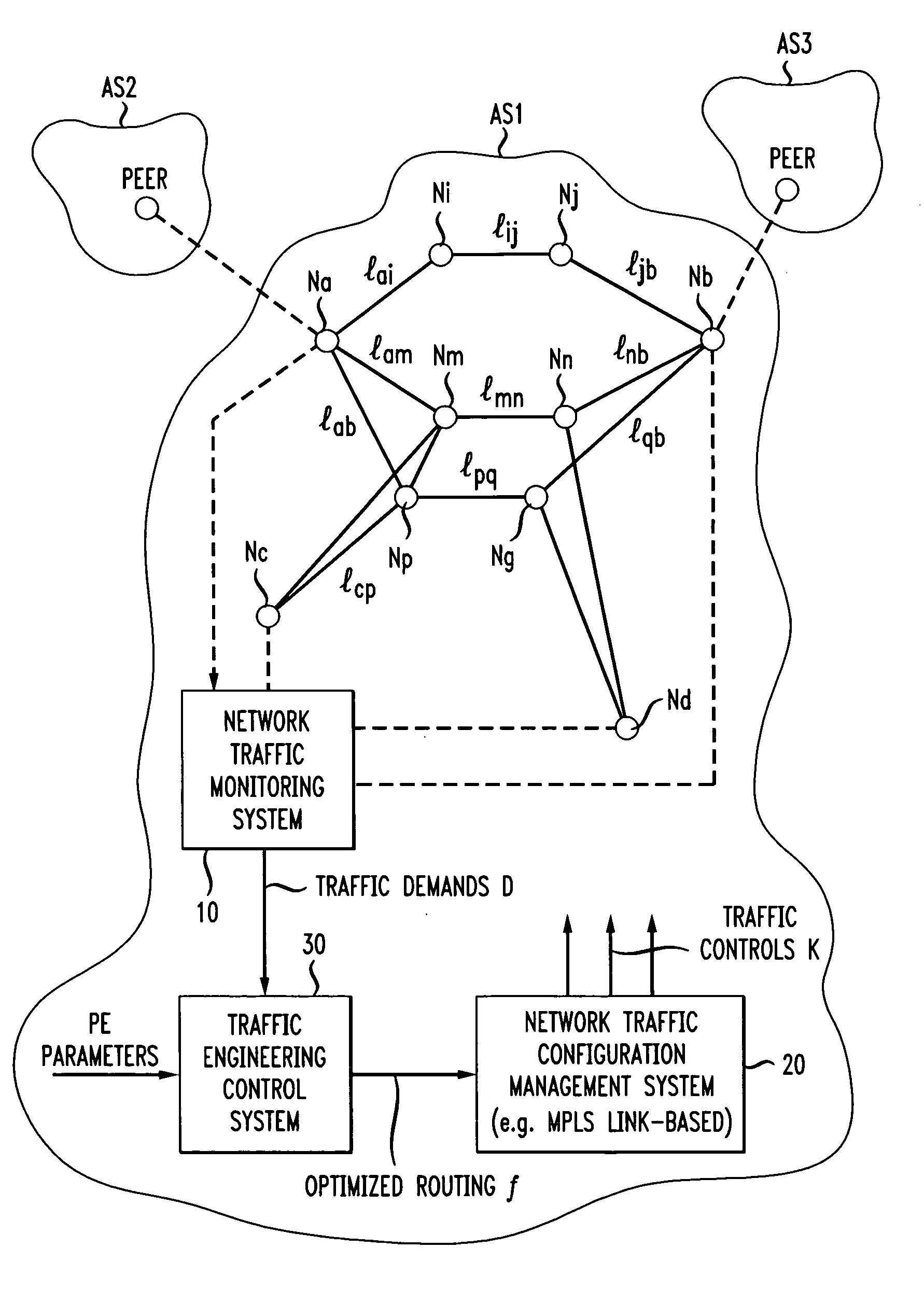Inefficient
resource utilization and congestion result when traffic streams are inefficiently mapped onto available resources, causing subsets of network resources to become overutilized while others remain underutilized.
Unfortunately, for many ASes, although traffic demand can be relatively stable most of the time, there exist time periods during which traffic can be highly dynamic, containing unpredictable traffic spikes that ramp up extremely quickly, leaving no time for a traffic
engineering algorithm to re-compute or adjust.
Many factors contribute to the highly unpredictable nature of
Internet traffic: outbreaks of worms / viruses, outages or routing changes of major ISPs, the occurrence of natural disasters, denial-of-service attacks, and flash-crowd effects due to major news events.
For many cases, traffic spikes occur exactly when the networking service should be at its most valuable.
In addition, with sources of adaptive traffic such as
overlay networks on the rise and more and more networks adopting traffic
engineering, volatility and variability in traffic could increase further.
If a traffic
engineering algorithm is not prepared for them, it may pay a serious performance penalty, possibly leading to
router overload and even crashes.
Such crashes reduce network reliability and may violate increasingly stringent service level agreements (SLAs), leading to potential financial penalties.
However, since these algorithms optimize routing specifically for these samples, when the real traffic deviates substantially from the samples (e.g., during the presence of traffic spikes), the routing may perform poorly.
However, when there are significant fast traffic changes, routing recomputation delays can cause such methods to suffer a large transient penalty.
We have observed through the use of real traffic traces that TE optimization based just on samples can pay a serious performance penalty when unexpected traffic spikes occur, leading to potential network failure.
Such large performance penalties arise when traffic demands change significantly from previous demands.
A potential drawback of completely oblivious routing, however, is its sub-optimal performance for normal traffic, which may account for the vast majority of the time the network operates.
Although they discovered that the ratio is typically only around 2, they also commented that overhead at this level “is far from being negligible to working ISPs.” The performance tradeoff required by oblivious routing means that in the average case, i.e., the case of expected traffic demands, oblivious routing is 30%-90% worse than optimal, which results in an inefficient and uneconomical use of network resources during the presumed majority of times the network is operating at average traffic levels.
The challenges to routing posed by such intradomain traffic demand fluctuations are compounded when the AS handles interdomain traffic through connections to other ASes.
First, although interdomain routes for most traffic volumes can be stable, there are
Border Gateway Protocol (BGP) routing changes which can cause significant shifts of traffic.
Second, interdomain routing introduces multiple-point demands; that is, there can be multiple equally-good egress points in the BGP
decision process.
Since egress links may become the bottlenecks of the network, this tie-breaking can affect the congestion of the network.
A major challenge in traffic engineering thus is how to cope with dynamic and unpredictable changes in intradomain traffic demands (as well as unpredictable changes in the availability and quality of interdomain routes), and simultaneously provide efficient and economical utilization of network resources during expected traffic demand scenarios.
 Login to View More
Login to View More  Login to View More
Login to View More 


